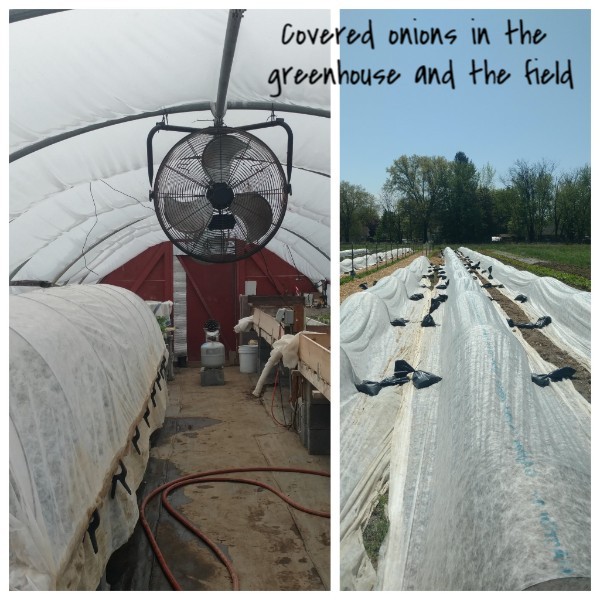We often think of onions as being these rugged, hardy things–a paragon of self-sufficiency that can nourish us all winter. In reality, growing onions organically is kind of a pain. The plants don’t grow big enough to block out weeds, so they require a lot of hand-weeding throughout their time in the fields. They need a lot of nutrients and specific soil moisture (moist, but not wet!), and fall victim to a whole host of pests and diseases.
Growing onions in this region became even more energy-intensive a few years ago after the emergence of the allium leafminer–a new invasive that has been troubling European farmers for years. Last season, we first noticed allium leafminer damage on our greenhouse transplants before the onions even made it into the field. With the early damage and the onlsaught of rain, those little seedlings didn’t stand a chance.
This year, we’re taking some extra precautions to ward of the leafminer threat. The 2018 onion crop has spent almost its entire life under protective row cover. From the greenhouse to the hardening off bench to the fields, these babies have been under proverbial lock and key. We’ll remove the covers in a week or two after the first leafminer flight and egg-laying period has passed. After that, it’s up to the onions to grow and flourish. All we can do is hope. Hope and weed.

